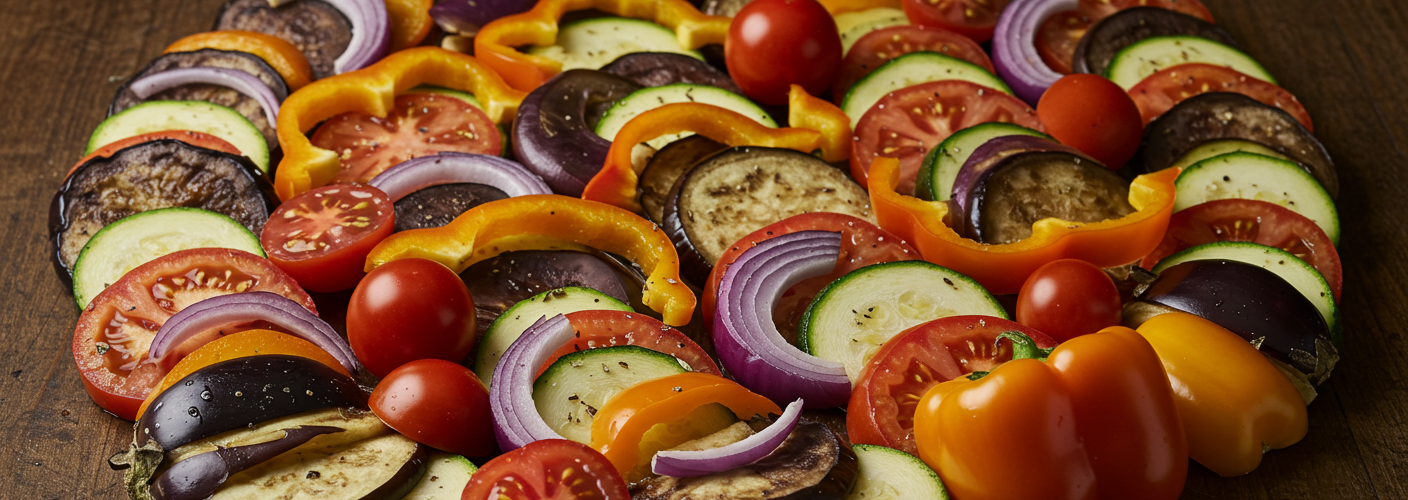Ratatouille is a classic dish hailing from the sunny kitchens of Provence, France. Known for its vibrant colors and robust flavors, this vegetable medley has captured the hearts (and palates) of food lovers around the globe. At its core, ratatouille is a celebration of fresh, seasonal vegetables, and when arranged together, it creates a visual tapestry that is almost as appealing as its taste.
The Origins of Ratatouille
The word “ratatouille” stems from the French verb “to stir up,” which perfectly encapsulates the process of preparing this dish. Historically, ratatouille was considered a peasant dish, made from the leftover vegetables that farmers harvested. Today, it has evolved into a gourmet recipe that showcases the best of seasonal produce. Traditional ratatouille includes tomatoes, eggplant, zucchini, bell peppers, onion, and garlic, often seasoned with herbs like basil, thyme, and rosemary.
The Beauty of Fresh Vegetables
When it comes to preparing ratatouille, the star ingredients are undoubtedly the vegetables. Visual appeal is at the heart of any good ratatouille presentation. Imagine a colorful array of diced and sliced vegetables laid out together: the rich purple of eggplant, the bright yellow and green hues of zucchini, the glossy red of ripe tomatoes, and the vibrant green of bell peppers. Each vegetable not only contributes to the flavor profile but also adds a unique texture and color variation to the dish.
To effectively prepare your ratatouille, choosing the freshest vegetables is key. Visit local farmers’ markets or grocery stores that emphasize seasonal produce. Look for firm, unblemished vegetables, as these will provide the best flavor. Remember, freshness enhances all the elements in your dish, from the aroma to the overall taste.
Preparing Ratatouille
Creating ratatouille begins with the right slicing technique. Precise cuts help the vegetables cook evenly and maintain their intended texture. While some recipes call for sautéing the vegetables separately before combining them, others suggest layering the vegetables and baking them in the oven for a beautiful, rustic presentation.
If you prefer a layered look, consider using a mandoline slicer for perfectly even slices. Start with a base of lightly sautéed onions and garlic in olive oil, then alternately layer thin slices of zucchini, yellow squash, eggplant, and tomatoes in a circular pattern. Drizzle with olive oil, sprinkle herbs like thyme and basil, and season with salt and pepper before baking.
Serving Ratatouille
Ratatouille can be served in various ways. It works beautifully as a main course, alongside some crusty bread or over a bed of polenta. Alternatively, it can act as a side dish, pairing well with grilled meats or fish. For a more modern twist, serve it with a dollop of ricotta or goat cheese on top.
In conclusion, ratatouille is more than just a vegetable dish; it’s a sensory experience that brings together a symphony of flavors. Its colorful presentation not only makes it a feast for the eyes but also encapsulates the essence of comfort food. Whether you’re preparing this dish for a family gathering or an intimate dinner, lay out your vegetables with care, and enjoy the delicious journey that ratatouille promises.




Add comment